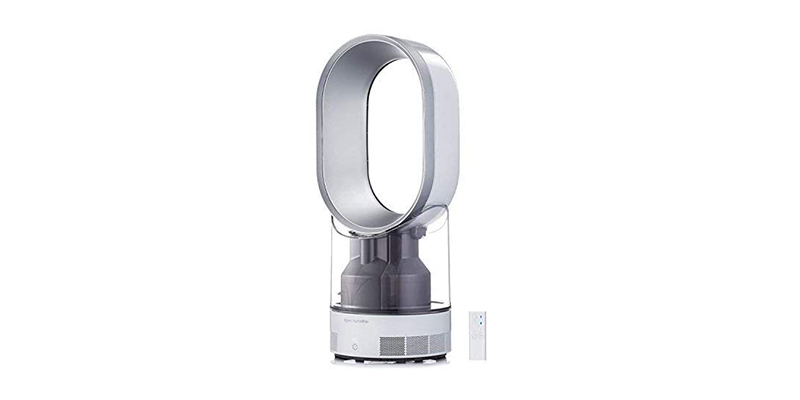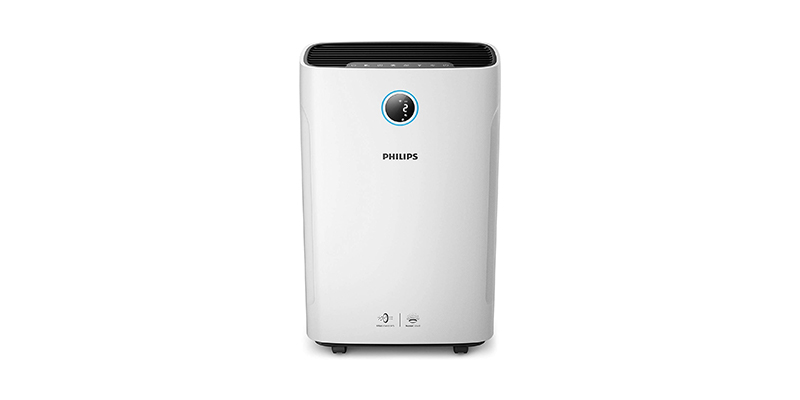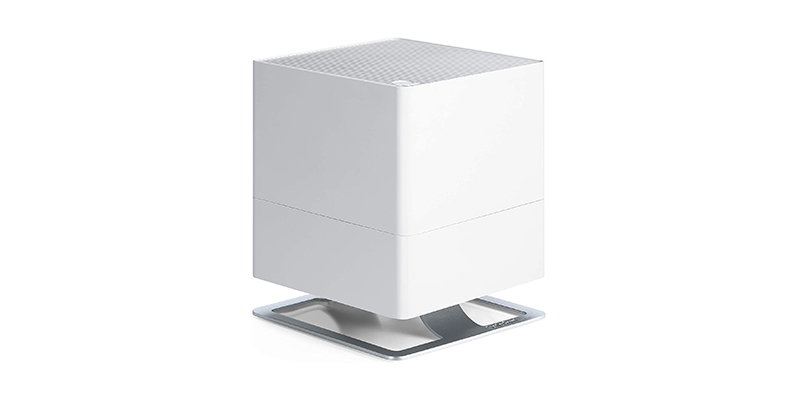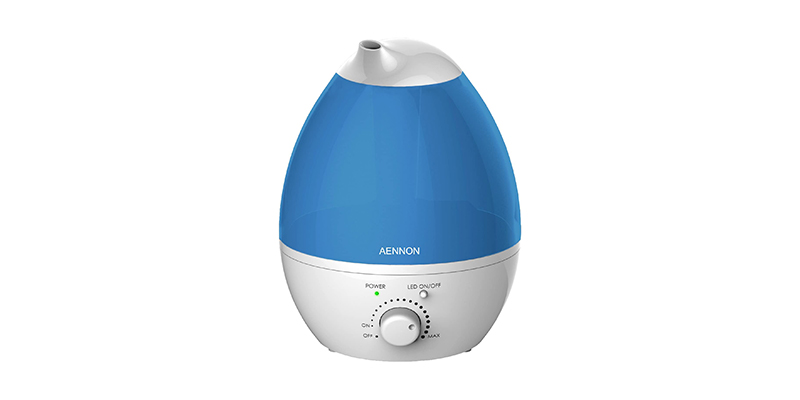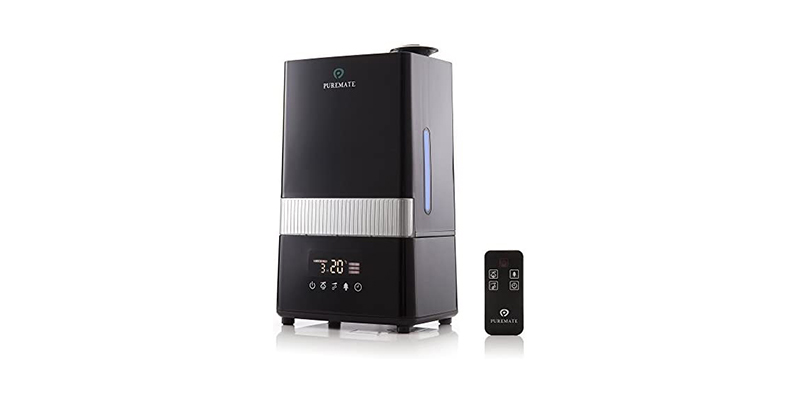When that cold weather front comes in, and the winter chill fills every room in the house, it can often leave you feeling a little dry and sore. With a simple humidifier, your room can be instantly pulled from the depths of dryness and brought back into a comfortable level of humidity.
While soothing dry skin and chapped lips, a humidifier for your home can also help with chesty coughs and breathing problems, relaxing your lungs and breathing in fresh, moist air.
With a long list of health aiding properties and winter warming possibilities, finding the right humidifier for you and your needs is an important process and taking the time to do it will ensure you pick the perfect one. Take a look at the best humidifiers on the market to find your ideal one.
Best Humidifiers
| # | PREVIEW | Product | |
|---|---|---|---|
| 1
Best For Higher Budgets
1Dyson VBPHUKA502 AM10 Humidifier
|
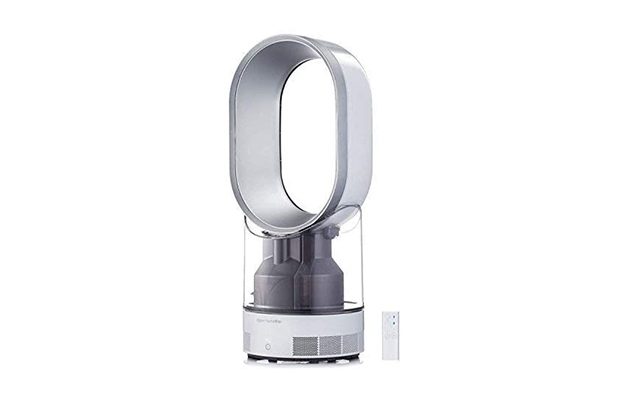
|
|
|
|
|
|||
| 2 |
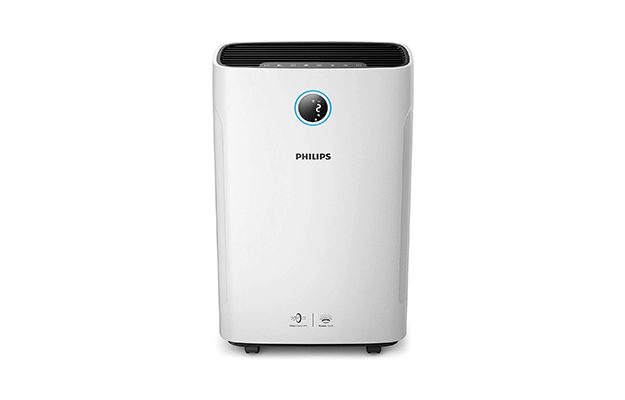
|
|
|
|
|
|||
| 3 |
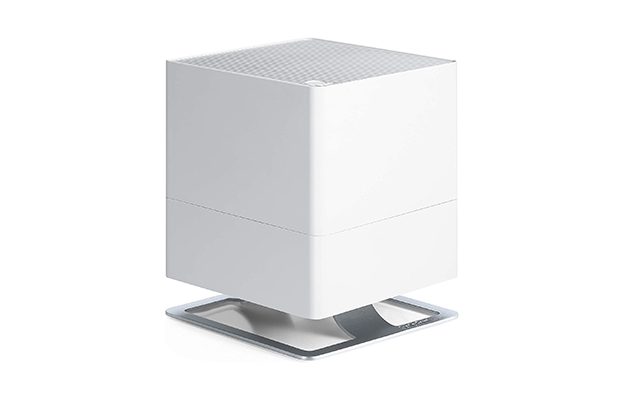
|
|
|
|
|
|||
| 4
Best For Low Budgets
4Aennon Ultrasonic Cool Mist Humidifier
|
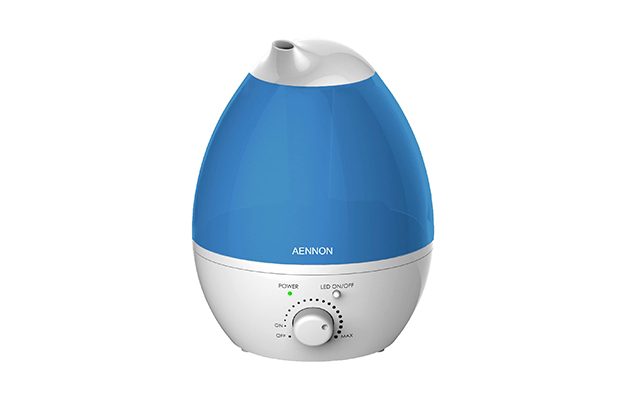
|
|
|
|
|
|||
| 5
Best Overall
5PureMate Digital Ultrasonic Cool Mist Humidifier
|

|
|
|
|
|
|||
1. Dyson VBPHUKA502 AM10 Humidifier
- Dual functionality – humidification and cool air.
- Air multiplier, ensuring long-range mist is generated.
- Built-in sleep timer.
- Exposes water droplets to ultraviolet light, ensuring it is free of bacteria.
Coming from the top household appliance manufacturer Dyson, you know this model is going to be state of the art. Using a groundbreaking design, this humidifier is equipped with antibacterial technology exposing every single drop of water to ultraviolet light.
This destroys nearly 99.9% of all bacteria in the water before it even leaves the device, leaving you with the freshest air possible.
By using air multiplier technology, this lightweight and compact humidifier can send air across rooms, fully filing a 16 square metre room in very little time. Although carrying a large price tag, purchasing this device will almost guarantee a lifetime of use.
Specifications
Pros
- One tank of water allows 18 hours of continuous use.
- Reliable brand name.
- Light and compact design.
- Low noise levels.
Cons
- High price tag compared to others on the market.
2. Philips Series 3000i 2-in-1 Purifier and Humidifier
- Removes particles as small as 0.003 microns.
- Three Auto modes: General, allergen and sleep.
- Track and monitor your humidifier via a smartphone.
- Can be used with Alexa to activate voice control.
This Phillips humidifier is perfect for the smartphone generation. Connect your device to a mobile phone via a downloadable app, and you are away.
Select from a variety of humidity setting straight from your phone, whether that’s 20% 40% or 60% humidity.
This dual 2 in 1 device is a combination of both a humidifier and an air purifier, making it capable of removing extremely small particles and airborne viruses.
The added extra Alexa voice activation makes the Phillips humidifier a real state of the art device.
The size of the water tank also lends itself perfectly to a whole days use without having to refill it, which is always an added bonus.
Specifications
Pros
- Capable of removing airborne viruses from the air.
- 2 in 1 device acts as both purifier and humidifier.
- Multi-level of humidity allows the user to choose between 20%, 40% and 60%.
Cons
- Noise level can be high.
3. Stadler Form Oskar Energy-Saving Humidifier
- Integrated hygrostat gauges precise humidification of the room.
- Smart power-saving mode economically reduces power when not needed.
- Night mode with dipped LED lighting and barely any noise.
- Can be operated with essential oils.
The square-shaped, LED-lit, Stader Form humidifier is a great device for those who wish for a state of the art device but don’t want the huge price tag that usually comes with them.
With an integrated hygrostat gauge, the humidifier is able to measure the humidity in the room and adjust itself accordingly.
Not only can the Stader From immerse your room with humid vapour, but it can also double up as essential oil distributor. This added extra allows you to sit back and relax immersed in the soothing scents of your favourite oil.
The humidifier’s night mode winds down the day with dipped LED lights and minimal sound, making it ideal for the little one’s room.
Specifications
Pros
- The reasonable price tag makes it great value for money.
- The square base can be set on tabletops.
- Lightweight design makes it easy to move.
- Switches itself off when the tank is empty, stopping faults.
Cons
- Output can be quite low.
4. Aennon Ultrasonic Cool Mist Humidifier
- Small and compact, making it ultra-mobile.
- Seven coloured LED light system provides colour choice.
- 2.8 litre capacity for long-lasting use.
- The low price tag makes great for low budgets.
Weighing only 1.3kg, the Aennon humidifier is the perfect device for mobility and value. With several different LED light settings, it can also be personalised to the decor of any room.
If you are a first-time buyer of humidifiers, the Aennon is a great choice, based on the price alone.
With an added aroma filter, the device also doubles up as a disperser of your favourite essential oils.
Place the device in any room and adjust the 360-degree nozzle, spraying the oils or humid air any direction you wish.
Specifications
Pros
- 360-degree nozzle points airflow in any direction.
- The stone filter eliminates odours easier.
- Built-in aroma filter to diffuse essential oils.
- Adjustable mist flow helps manage the output.
Cons
- Small size can make it unsuitable for large rooms.
5. PureMate Digital Ultrasonic Cool Mist Humidifier
- State of the art humidity setting can measure the levels of the room accurately.
- The large 4.5-litre water tank can humidify the largest of rooms.
- The water filter can expel even the toughest of limescale and calcium.
- Works up to 12 hours, without being refilled.
Arguably one of the best humidifiers on the market, the PureMate combines state of the art technology with user-friendly features.
With a huge 4.5 litre tank, this humidifier can last up to 12 hours with one full use, constantly measuring the air’s humidity as it works.
This lightweight and portable humidifier has both cool mist and a warm humid setting, making it ideal to use in both summer and winter months. The resin water softener technology removes all impurities from the water, including limescale, calcium and magnesium ions that are all found in hard water.
With nearly every feature available for modern humidifiers, the PureMate’s price makes it affordable for even the thrifty of users.
Specifications
Pros
- Up to date technology but with a low price.
- Will turn itself off when humidity level has been reached.
- Cool mist and heating settings.
- Lightweight for its power.
Cons
- Unable to diffuse oils.
Humidifier Buying Guide
What Does a Humidifier Do?
A humidifier is a device that expels water vapour into a room, increasing the water levels in the air, and consequently the humidity, opposed to dehumidifiers.
Although there are many types of humidifiers, at the basic level they all emit moisture into the air, alleviating some of the ailments that come with cold weather, such as dry skin or chapped lips.
Type
Humidifiers come in a variety of types, each one with their own advantages and disadvantages. The main differences users will find is between cool mist humidifiers and warm mist humidifiers.
Choosing the right one for you all depends on your own particulars and what you are using the humidifier for.
Cool Mist Humidifier
A cold mist humidifier is the most common version of the humidifier on the market. As the name suggests, cool mist humidifiers work by releasing cool mist into the air, working as an air conditioner as well as a humidifier.
Along with their cooling properties, cool mist humidifiers are seen as great appliances for aiding swollen nasal passages, allowing you to breathe much better.
Cool mist humidifiers are generally easier to clean, more effective in larger areas, and better for users in warmer climates.
The only downsides to cool mist humidifiers are the fact they tend to be noisier than other types, and the intricate filter system makes regular maintenance a must.
Warm Mist Humidifier
Warm mist humidifiers work by releasing heated humidity into the air and raising the temperature of any room they are placed in.
Warm mist humidifiers are noted for being able to treat chest illnesses such as coughs and colds, working by attacking flu-like viruses with heat.
Without the need for a fan, warm mist humidifiers are far quieter than their cooler counterparts.
The mist that is produced by warm mist humidifiers is also seen as far cleaner than the cool mist design.
As the water is heated, this type of humidifier requires far more cleaning, eliminating the chance of mould or algae growing inside the heated moisture.
Be careful not to leave a warm mist humidifier around young children, as the heating elements of the device may cause burns to delicate skin.
Ultrasonic VS Evaporative
Alongside the differing temperatures, humidifiers are again divided into two separate categories, ultrasonic and evaporative.
An ultrasonic humidifier uses a nebuliser, which is a metal diaphragm that vibrates much like an electronic speak would.
This vibration sends out ultrasonic waves, creating water droplets which are then expelled into the air via a fan.
These types of humidifier tend to be almost silent, making them more appealing to those who want to be unaware of the unit. The ultrasonic humidifier is designed without a filter attached to the unit; this saves operation costs but also increases the chance of white dust accumulating around the room.
An evaporative humidifier is the more common of the two and works on a more simple process. A fan draws cool water over a moist wick filter and blows it into the surrounding room.
Because the evaporative humidifier has a filter, less white dust is accumulated with a sort of device. Evaporative humidifiers are more likely to be bulkier in appearance, as they contain far much more moveable parts including a fan and wick.
The noise levels on evaporation humidifiers can become an issue for some users, especially if you are placing it in the bedroom.
As the mechanism works with an internal fan, noise levels can not be completely eliminated from evaporation humidifiers.
Overall, choosing between the two different types completely depends on what you value more from a humidifier design.
If affordability is higher on the list and little maintenance isn’t a problem then opting for an evaporative humidifier is best.
If a quieter unit and low maintenance are more your thing, then it is worth paying that little extra and selecting an ultrasonic humidifier.
Placement
Deciding where to place your humidifier is key to getting the best out of the device. Knowing where to put it all depends on what room you are in.
It is imperative that you match the size of the room with the size of the device. If you are placing your humidifier in a large room, a small device will simply have no effect, and the humidity will be instantly lost.
The same is true for a large device in a small room; the moisture will be overwhelming and even a detriment to your health.
If we take a bedroom humidifier, for example, then placing the humidifier close to the bed is your best bet as the moisture and cleansing properties will be felt instantly while sleeping.
If you are using a warm mist humidifier, however, place the device a little further from the bed as boiling water is safer at a distance.
When thinking of placement with a living room humidifier, it is often best to place the device where you and your family spend most of the time.
The health benefits will be far better received when the humidifier is closer to its users.
If you are using a humidifier for a young child or even a baby’s room, the placement of the unit should be done safely.
It is not advisable to purchase and use a warm mist humidifier if you are placing it in a baby’s room, as the chance of burns from the boiling mechanism is heightened considerably.
Humidifier Uses
Humidifiers are primarily used for their health benefits, especially when it comes to respiratory and skin based ailments.
The reason for this is the moisture it creates in the users surrounding area, particularly when the natural climate is one of cold and dry.
Many ailments and illnesses are far more prevalent during the colder autumnal and winter months. When the climate is colder, the atmosphere is far dryer.
This dry cold climate opens up people to be far more susceptible to skin and respiratory illnesses.
By changing the room’s atmosphere from cold and dry to warm and humid, the humidifier reduces the chance of some illnesses.
Humidifier For Dry Skin
Those who experience particularly dry and itchy skin may benefit from using a humidifier in their home.
When the outer layers of a person’s skin are dehydrated, then moisture and water loss is increased dramatically, causing the skin to dry and crack.
With a humidifier placed in a room, moisture levels can be kept at a beneficial high, while at the same time heating the room.
The humid room will keep the skin moist and supple, stopping it from drying out. Although the health benefits for dry skin are widely known, if you suffer considerably high levels of dry and irritable skin, discuss using a humidifier with your doctor before you choose this course of action.
Humidifier For Cough
One of the most common humidifier uses is for more respiratory illnesses such as coughs and colds. The theory behind this use is the cool, moist air loosens airways, making it easier to breathe.
It is important to factor in the cleanliness of your device and the water if you are choosing to use a humidifier for this purpose.
As the moist, humid environment of a humidifier is the ideal place for mould, bacteria, and fungus to grow, cleanliness is key.
Breathing in harmful fungus and bacteria while you already have a cough or chest infection could be deadly.
It is good practice to use distilled or demineralised water in your humidifier, rather than water from the household tap.
This prevents mineral deposits from forming in the humidifier and causing more respiratory problems than before.
Size
Choosing the right size humidifier all depends on the size of the room you are trying to humidify. Choosing the wrong size at an early stage can have unwanted effects further down the line. Opt for a small humidifier if the room you’re using it in is small. Using a large humidifier in a small room will cause an excess of moister in the air, something that can lead to mould growth and even ill-health.
Each humidifier model usually gives a reading in square feet of how much space it can humidify in 24 hours. If you only require the humidifier for one room, a tabletop or a portable humidifier is often more than up to the job. Whichever size you choose to buy and use, always monitor your humidity levels, keeping it at a safe and optimum level.
Portability
Humidifiers are generally divided into two subcategories, whole-house and portable. A whole-house humidifier is built into a pre-existing furnace or air conditioning system.
A portable humidifier, on the other hand, is a device that can be moved around, room by room.
Freestanding portable humidifiers have their own water supplies, usually on wheels, and plug into the houses mains electrics.
Maintenance is the drawback when it comes to portable humidifiers, and the refilling of water supplies is usually a daily task.
Many of the portable humidifiers have removable tanks, yet some you have to bring the water to the machine.
The compact nature of a portable humidifier means that no more than a litre or two of water can be placed in at any one time, meaning a constant refilling is needed.
Humidity Level
Humidity levels must be monitored throughout their use, ensuring that levels are both optimum and safe. The optimum level of humidity in a room should be between 30% and 50%.
Many models of humidifiers come with a built-in humidity gauge, if yours is without this built-in gauge, then purchasing a hygrometer is a necessity.
Having a humidity level that is too low will make the purchase and use of the device pointless.
Having a humidity level that is too high can mean an undesirable level of moisture in the air and can cause issues such as mould or bacteria growth.
Pricing Range
When it comes to humidifiers, the pricing range can differ hugely.
Starting under $100 right up to the four-figure numbers and beyond. Purchasing a cheap humidifier may not break the bank, but it will mean its capabilities and performance levels might limit you.
At the lower end of the scale, humidifiers are often temperamental and prone to short life spans.
If you are serious about achieving a good level of humidity and keeping your device in working order for longer than a year or two, it is advisable to splash out a little more.
Frequently Asked Questions

As air passes through the humidifier filter a little is evaporated, sending moisture into the air and raising the humidity levels of the room it is in. The higher humidity levels, the harder it is for the device to evaporate more water – making it self-regulating.

Clean out all parts of the reservoir with warm water and soap, then fill it back up with fresh water. Position your humidifier on a raised surface and at least 12 inches away from all walls. Turn the device on and adjust the settings to suit your needs.

Humidifiers are particularly good for treating ailments such as dry skin, chesty cough and other such moisture-related problems.
Our Verdict
When deciding on the best humidifier, it is important to figure out when and where you are likely to use the device. This prior understanding is vital to choosing the right device for you. From large home comforts to softer baby room devices, there is a model out there for all.
After considering where you are using the humidifier, it is then ideal to know what more you want from it, including smart technology, easy to change filters or added essential oil diffusers. These multiple add ons will, of course, affect the price of the humidifier, which can change just as much as the devices themselves.
After balancing up this careful equation, you will arrive at the perfect humidifier for you and your uses.

